Why Your Text Messaging Campaign Bombed

Many companies tell us, “We’ve tried texting our clients, and it just doesn’t work.” But not all text messaging is created equal.
There’s a big difference between this:

and this:
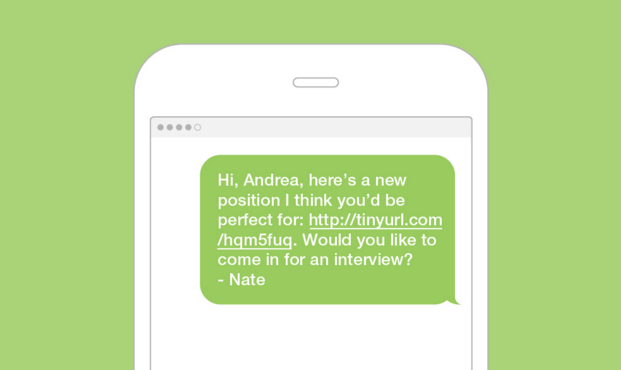
There are two kinds of business text messaging. Short-code texting is about interruption, promotion, and mass marketing. The first message, you probably guessed, is an example of short code.
The second message gives you an example of how you can use long-code text messaging. Long code is about connection, value, and responsiveness.
What are the differences between the two? And why is long code the ticket to making business-class text messaging work for you and your candidates?
Here’s the long and short of it:
Short Code is Short on Interaction
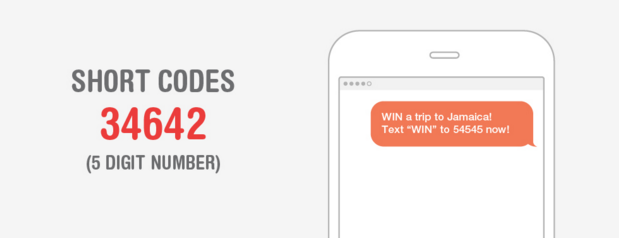
Short codes are five- or six-digit numbers that work best for impersonal text campaigns in high volume. Short-code texting is a one-way form of communication. It allows your company to send mass, identical texts to a large number of folks. Customers cannot respond to these messages in a meaningful way. They can only reply to automated messages with keywords like “STOP” and “HELP.”
Long Codes Encourage Long-Term Relationships
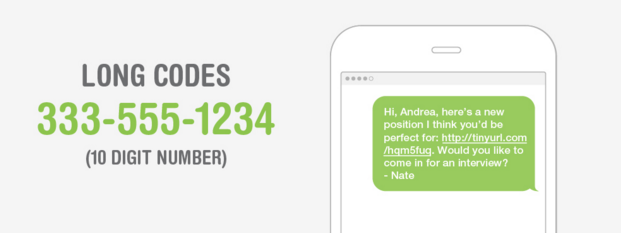
Long-code texting encourages two-way communication. This is the kind of texting that your candidates and clients are used to. It’s what they do with their friends. A long-code number is a text-enabled phone number, routed through a phone or an app on your computer. With it, you can send candidates and clients any kind of text: an interview or appointment reminder, a link to a relevant industry article, or a short thank-you note.
Most importantly, candidates and clients can reply back to you with questions, thoughts, and thanks of their own. While short-code texting is used solely for mass marketing, long-code texting can be used to deepen relationships, provide valuable content, and promote brand awareness.
Here’s a closer look at some of the other critical ways in which long and short codes are different beasts:
1. Use
Short code: “ALERT: Your bill is due in 7 days.”
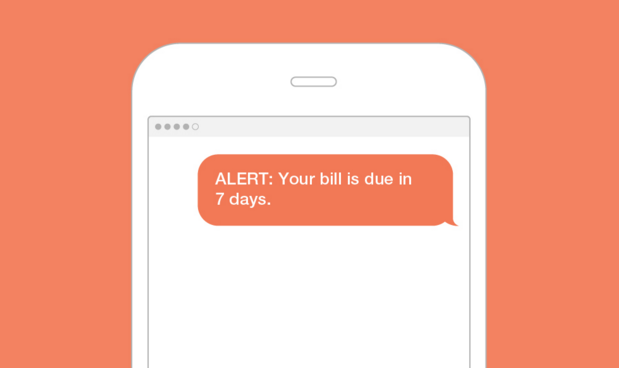
Short codes are best for automated updates and other regular communications that don’t require a response or interaction. Here are some examples:
– Monthly bill reminders
– Company-wide emergency notices
– Account security notifications
– Appointment reminders
– Weather or traffic alerts
– Info on promotions and deals
Short code is also handy for entry into sweepstakes or contests via keyword and for surveys, voting, and other tallies that don’t require customer interaction.
Long code: “Hey, Daniel. I Saw This Article and Thought of You”
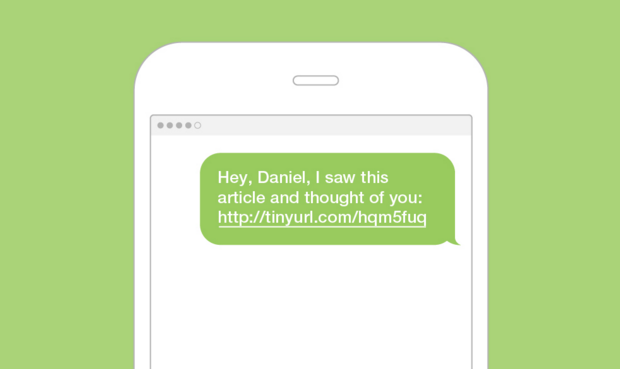
Long code is built for more in-depth connections. It has the same flexibility as email and the convenience of mobile. For example, recruiters can use long code to:
– target job postings to specific candidates
– clarify candidate information, such as availability, skills, interests, and search timeframe
– send interview invitations
– invite prospects to select between a variety of interview or meeting times
– confirm an interview
– follow up after an interview
Two-way texting is the kind of personalized, individual attention that candidates want.
2. Reputation
Clients and candidates may resist business text messaging if they are worried about being spammed. One of the strongest ways to avoid the spammer trap is to choose the more respectable way to text your candidates.
Short code is more closely linked with spamming. It’s often a giant headache to get out of the short code grasp. Clients may expect to be texted too often, harassed by text bots, or charged random fees if they interact with a short-code number.
Carriers don’t allow mass, rapid texting via long codes. You can easily show your clients that business texting can be just like the personal texting they’re used to: convenient, individualized, and safe. A few ways to do that:
– Ask permission before you text
– Explain your no-spam policy
– Protect your candidates’ contact information
– Always personalize your messages
By keeping the human touch in your messaging, you’ll put the class in business-class texting.
3. Effectiveness
Mass, impersonalized communication just doesn’t work when it comes to getting people’s attention anymore. At TextUs, we did a study on how staffing and recruiting firms used text messaging. Fast-growth and slow-growth firms text very differently.
Slow-growth firms follow a short-code model when texting: they send mass, impersonal, high-volume communications.
Fast-growth firms, on the other hand, are in the long-code camp. Their texting is highly-personalized and individual. They use text for sales, candidate touches, and everyday business communication. Candidates overwhelmingly respond more positively to texts from the fast-growth firms.
–
So, if your recruiting firm is considering text messaging, play the long-code game. Our study found that 75 percent of recruiting firms found texting effective, but howyou text matters.
Don’t sell your clients and candidates short.
–
This article was coauthored by Erich Hugunin, vice president of sales at TextUs, and Matthew Kosinski, online editor at Recruiter.com

